
Zona 10: The Vibrant Heart of Guatemala City
Discover Zona 10 in Guatemala City: A vibrant neighborhood brimming with culture, exquisite dining, and lively nightlife, perfect for every type of traveler.
Welcome to Zona 10, the bustling epicenter of modern life in Guatemala City. Known as the 'Zona Viva' or 'Lively Zone,' this neighborhood is the beating heart of the city's cultural, culinary, and nightlife scenes. As you stroll through its streets, you'll be greeted by a mix of contemporary skyscrapers, luxurious hotels, and charming local shops that reflect the area's unique blend of cosmopolitan flair and traditional Guatemalan charm. Zona 10 is famous for its vibrant dining scene, offering everything from upscale international cuisine to delightful local dishes. Food enthusiasts will revel in the diversity of flavors, whether you're indulging in gourmet meals at high-end restaurants or savoring street food at bustling markets. The neighborhood is also home to some of the best coffee shops in the city, perfect for a relaxing afternoon break. For those interested in history and culture, Zona 10 does not disappoint. The area boasts several museums and galleries showcasing Guatemalan art, history, and heritage. Additionally, the nearby Avenida La Reforma, one of the city's main thoroughfares, offers a picturesque walk lined with statues, fountains, and lush greenery. As night falls, Zona 10 truly comes alive with its array of bars, nightclubs, and live music venues, ensuring that there's always something to enjoy, no matter your preference.
Local tips in Zona 10
- Visit during the Guatemala International Film Festival for a unique cultural experience.
- Make reservations in advance for popular restaurants, especially on weekends.
- Use local taxis or rideshare apps to navigate Zona 10 safely at night.
- Check out the rooftop bars for stunning views of the city skyline.
- Wear comfortable shoes as the best way to explore is on foot.
Zona 10: The Vibrant Heart of Guatemala City
Welcome to Zona 10, the bustling epicenter of modern life in Guatemala City. Known as the 'Zona Viva' or 'Lively Zone,' this neighborhood is the beating heart of the city's cultural, culinary, and nightlife scenes. As you stroll through its streets, you'll be greeted by a mix of contemporary skyscrapers, luxurious hotels, and charming local shops that reflect the area's unique blend of cosmopolitan flair and traditional Guatemalan charm. Zona 10 is famous for its vibrant dining scene, offering everything from upscale international cuisine to delightful local dishes. Food enthusiasts will revel in the diversity of flavors, whether you're indulging in gourmet meals at high-end restaurants or savoring street food at bustling markets. The neighborhood is also home to some of the best coffee shops in the city, perfect for a relaxing afternoon break. For those interested in history and culture, Zona 10 does not disappoint. The area boasts several museums and galleries showcasing Guatemalan art, history, and heritage. Additionally, the nearby Avenida La Reforma, one of the city's main thoroughfares, offers a picturesque walk lined with statues, fountains, and lush greenery. As night falls, Zona 10 truly comes alive with its array of bars, nightclubs, and live music venues, ensuring that there's always something to enjoy, no matter your preference.
Iconic landmarks you can’t miss
Oakland Place Guatemala
Explore Oakland Place, Guatemala – a vibrant shopping mall offering a mix of local culture, trendy shops, and delicious dining options in the heart of the city.

Wyndham Garden Guatemala City
Experience comfort and elegance at Wyndham Garden Guatemala City, a peaceful retreat offering modern amenities and easy access to local attractions.

Hacienda Real Zona 10
Experience the best of Guatemalan steak at Hacienda Real Zona 10, where exquisite flavors and a refined atmosphere create unforgettable dining moments.

Torre del Reformador
Experience the grandeur of Torre del Reformador, a breathtaking monument in Guatemala City reflecting its rich history and vibrant culture.

Plaza España
Explore the vibrant Plaza España in Guatemala City, a cultural monument that celebrates Spanish heritage with stunning architecture and lively local events.

Cadejo Brewing Company
Experience the best of craft beer and local cuisine at Cadejo Brewing Company in Guatemala City’s vibrant Zone 10, a true brewpub delight.

Museo Popol Vuh
Discover the cultural treasures of Guatemala at Museo Popol Vuh, showcasing ancient Mayan artifacts and rich historical narratives.

Museo Ixchel del Traje Indígena
Explore the vibrant culture of Guatemala at Museo Ixchel del Traje Indígena, a heritage museum celebrating traditional indigenous textiles and attire.
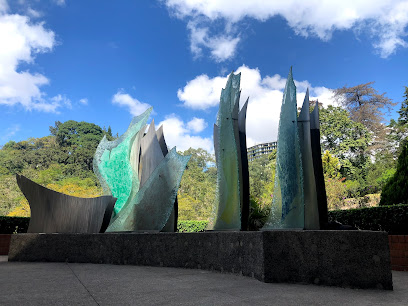
LA JOYA DE OAKLAND Park
Experience peace and natural beauty at La Joya de Oakland Park, a tranquil oasis in the heart of Guatemala City perfect for relaxation and exploration.

Plaza Colombia
Discover the historical essence of Guatemala City at Plaza Colombia, a vibrant landmark filled with culture, architecture, and local charm.

Unmissable attractions to see
Ecological and Sports Park Cayalá
Discover the perfect blend of nature and sports at Ecological and Sports Park Cayalá in Guatemala City, an ideal destination for outdoor enthusiasts.

The Children's Museum of Guatemala
Discover the magic of childhood at The Children's Museum of Guatemala, where learning meets fun in an interactive playground for young minds.
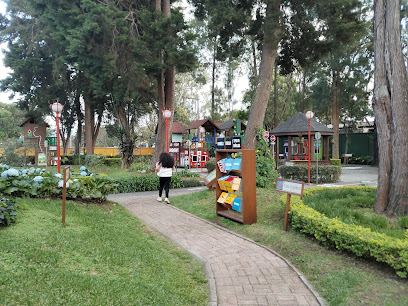
Museo Ixchel del Traje Indígena
Explore the vibrant textiles and rich cultural heritage of Guatemala at Museo Ixchel del Traje Indígena, a must-visit heritage museum in the heart of Guatemala City.

Military Museum and Ex Fort Saint John
Discover the rich military history of Guatemala at the Military Museum and Ex Fort Saint John, where history meets education in an iconic setting.

Acueducto de la serpiente
Explore the stunning Acueducto de la Serpiente in Guatemala City, an architectural gem reflecting rich history and breathtaking landscapes.

Essential places to dine
Hacienda Real Zona 10
Experience culinary excellence at Hacienda Real Zona 10 – where premium steaks meet vibrant ambiance in Guatemala City.

Montano's
Experience gourmet dining at Montano's in Zone 10; where exquisite flavors meet elegant ambiance in Guatemala City.

Del Griego
Experience authentic Greek cuisine at Del Griego in Guatemala City - where Mediterranean flavors meet local warmth.

Restaurante El Adobe Zona 10
Discover authentic Guatemalan cuisine at Restaurante El Adobe Zona 10 - where tradition meets flavor in every dish.

Gracia Cocina de Autor
Experience innovative Guatemalan cuisine at Gracia Cocina de Autor - where tradition meets modern culinary artistry in an elegant setting.

Clio's
Experience authentic French cuisine at Clio's in Guatemala City - where culinary artistry meets exquisite flavors.

Jakes
Discover culinary excellence at Jakes in Guatemala City—where local flavors meet international cuisine in an elegant setting.

Carpaccio Restaurante
Indulge in authentic Italian cuisine at Carpaccio Restaurante in Guatemala City – where every meal is a celebration of flavor and tradition.

Marios Restaurante
Experience the vibrant flavors of Guatemala at Marios Restaurante, where tradition meets innovation in every delicious dish.

ARTISAN Restaurante
Discover the essence of Guatemalan cuisine at ARTISAN Restaurante - where tradition meets innovation in every dish.

Markets, malls and hidden boutiques
Accesorios K-pop
Discover the vibrant world of K-pop fashion and accessories at Accesorios K-pop in Guatemala City, a paradise for K-pop fans.

Boutique Faber-Castell Guatemala • Fontabella
Explore the vibrant world of art at Boutique Faber-Castell Guatemala, offering exquisite supplies and unique leather goods in Plaza Fontabella.

Express
Shop at Express in Guatemala City for trendy clothing, stylish accessories, and a unique fashion experience catering to all ages and tastes.

Tiendas Mass, Zona 10
Explore the delightful Tiendas Mass in Zona 10 for a unique shopping experience filled with local products and gourmet treats.
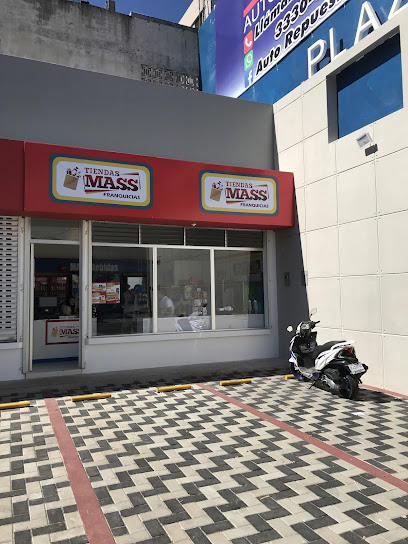
Casa Casa Diagonal (Zona10)
Explore the vibrant and colorful world of Guatemalan crafts at Casa Casa Diagonal, your go-to gift shop in Zone 10, Guatemala City.

Casa Niu
Explore Casa Niu in Guatemala City for unique gifts, fashion accessories, and home goods that celebrate Guatemalan culture and craftsmanship.

Clothing Store
Discover stylish women's fashion in the heart of Guatemala City’s Zone 10, perfect for every occasion and taste.

Nomada Style Gt
Discover unique Guatemalan fashion at Nomada Style GT in Zone 10, where traditional craftsmanship meets modern style.

Boutique La Mirage
Discover unique fashion at Boutique La Mirage, a stylish clothing store in Guatemala City offering a blend of contemporary and timeless styles.
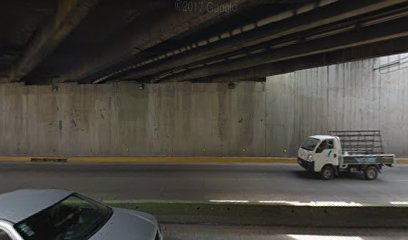
Mackevans Boutique
Discover the charm of Guatemalan fashion at Mackevans Boutique, where contemporary style meets traditional craftsmanship in the heart of Zone 10.

Essential bars & hidden hideouts
El Establo
Experience the lively ambiance of El Establo, a premier live music bar in Guatemala City, perfect for those seeking vibrant nightlife and cultural immersion.

Rattle n Hum Bar and Grill
Experience the vibrant atmosphere and delicious flavors at Rattle n Hum Bar and Grill, a culinary gem in the heart of Guatemala City.
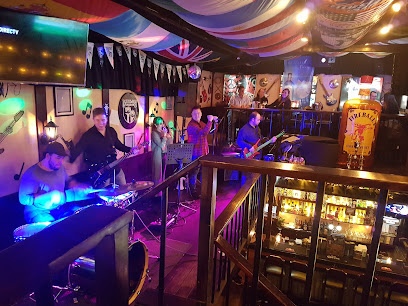
Bajo Fondo Funk
Discover the energetic nightlife of Bajo Fondo Funk in Guatemala City, a bar offering eclectic drinks and a vibrant atmosphere for an unforgettable experience.

Astro Bar
Experience upscale nightlife at Astro Bar in Guatemala City, where creative cocktails and stunning views combine for an unforgettable evening.

Red Lion Pub
Experience the vibrant nightlife at Red Lion Pub in Guatemala City, where locals and tourists gather for great drinks and sports.

THE LOBBY
Experience the vibrant flavors and lively atmosphere at The Lobby, Guatemala City's premier grill and bar in the heart of Zone 10.
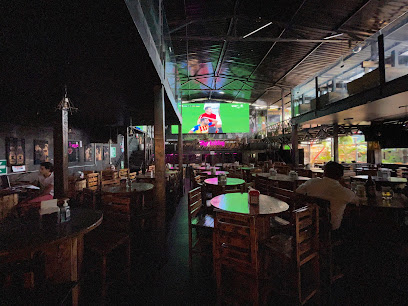
Shakespeare’s Pub
Experience the charm of Shakespeare’s Pub in Guatemala City, where local flavors meet a cozy ambiance in a vibrant nightlife setting.

Uncle Sam's
Experience the vibrant atmosphere of Uncle Sam's, Guatemala City's premier sports bar for dynamic games and delicious food.

Breaking Bar Gt
Discover the lively spirit of Guatemala City at Breaking Bar Gt, where unique cocktails and a vibrant atmosphere await every visitor.

Red Wine Bar
Discover the charm of Red Wine Bar in Guatemala City, where exquisite wines meet a cozy atmosphere, perfect for relaxation and socializing.
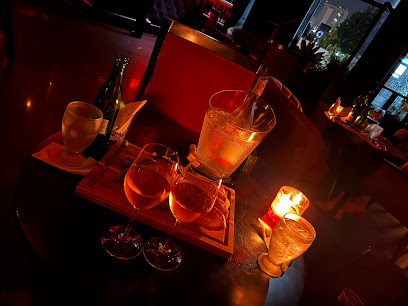
Local Phrases
-
- Hello¡Hola!
[o-la] - Goodbye¡Adiós!
[a-di-oz] - YesSí
[si] - NoNo
[no] - Please/You're welcomePor favor/De nada
[por fa-vor/de na-da] - Thank youGracias
[gra-sias] - Excuse me/SorryDisculpe/Perdón
[dis-cul-pe/per-don] - How are you?¿Cómo estás?
[ko-mo es-tas] - Fine. And you?Bien. ¿Y tú?
[bien. i tu] - Do you speak English?¿Hablas inglés?
[a-blas in-gles] - I don't understandNo entiendo
[no en-tien-do]
- Hello¡Hola!
-
- I'd like to see the menu, pleaseMe gustaría ver el menú, por favor
[me gus-ta-ria ver el me-nu, por fa-vor] - I don't eat meatNo como carne
[no co-mo car-ne] - Cheers!¡Salud!
[sa-lud] - I would like to pay, pleaseMe gustaría pagar, por favor
[me gus-ta-ria pa-gar, por fa-vor]
- I'd like to see the menu, pleaseMe gustaría ver el menú, por favor
-
- Help!¡Ayuda!
[a-yu-da] - Go away!¡Vete!
[ve-te] - Call the Police!¡Llame a la Policía!
[ya-me a la po-li-sia] - Call a doctor!¡Llame a un médico!
[ya-me a un me-di-ko] - I'm lostEstoy perdido
[es-toy per-di-do] - I'm illEstoy enfermo
[es-toy en-fer-mo]
- Help!¡Ayuda!
-
- I'd like to buy...Me gustaría comprar...
[me gus-ta-ria com-prar] - I'm just lookingSólo estoy mirando
[so-lo es-toy mi-ran-do] - How much is it?¿Cuánto cuesta?
[kwan-to kues-ta] - That's too expensiveEsto es demasiado caro
[es-to es de-ma-sia-do ka-ro] - Can you lower the price?¿Puede bajar el precio?
[pwe-de ba-har el pre-cio]
- I'd like to buy...Me gustaría comprar...
-
- What time is it?¿Qué hora es?
[ke o-ra es] - It's one o'clockEs la una
[es la u-na] - Half past (10)Las diez y media
[las djez i me-dia] - MorningMañana
[ma-nya-na] - AfternoonTarde
[tar-de] - EveningNoche
[no-che] - YesterdayAyer
[a-yer] - TodayHoy
[hoi] - TomorrowMañana
[ma-nya-na] - 1Uno
[u-no] - 2Dos
[dos] - 3Tres
[tres] - 4Cuatro
[kwa-tro] - 5Cinco
[sin-ko] - 6Seis
[seis] - 7Siete
[sje-te] - 8Ocho
[o-cho] - 9Nueve
[nwe-ve] - 10Diez
[djez]
- What time is it?¿Qué hora es?
-
- Where's a/the...?¿Dónde está un/el...?
[don-de es-ta un/el] - What's the address?¿Cuál es la dirección?
[kwal es la di-rek-sion] - Can you show me (on the map)?¿Puede mostrarme (en el mapa)?
[pwe-de mos-trar-me (en el ma-pa)] - When's the next (bus)?¿Cuándo es el próximo (autobús)?
[kwan-do es el pro-ksi-mo (au-to-bus)] - A ticket (to ....)Un boleto (para ....)
[un bo-le-to (pa-ra)]
- Where's a/the...?¿Dónde está un/el...?
History of Zona 10
-
Zona 10, also known as Zona Viva, has its roots in the colonial era of Guatemala City, established in the 16th century. The area developed as a residential zone for the affluent, reflecting the social hierarchy of colonial society. Its proximity to the historic center of Guatemala City made it a desirable location, contributing to its evolution into a commercial and cultural hub.
-
After Guatemala gained independence from Spain in 1821, Zona 10 began to modernize. The late 19th and early 20th centuries saw the construction of notable buildings and infrastructure that catered to the growing middle and upper classes. This period marked the beginning of its transformation into a vibrant area known for its commerce, including shops, restaurants, and cultural venues.
-
The Guatemalan Civil War (1960-1996) affected many neighborhoods, including Zona 10. While it maintained a degree of safety due to its affluent residents, the socioeconomic disparities highlighted the struggles of other areas in the city. Post-war, Zona 10 became a symbol of resilience and recovery, attracting businesses and expatriates seeking a stable environment.
-
In the late 20th century, Zona 10 underwent significant urban development, establishing itself as the commercial heart of Guatemala City. With the rise of high-rises, shopping centers like Plaza Fontabella, and upscale hotels, the area has become a focal point for both local and international businesses, as well as cultural exchanges, making it a cosmopolitan center.
-
Today, Zona 10 is not only a financial district but also a cultural hotspot. The neighborhood hosts various art galleries, theaters, and cultural events. This renaissance reflects the broader revitalization of Guatemala City, where contemporary art and historical heritage coexist, showcasing the city's dynamic cultural landscape.
Zona 10 Essentials
-
Zona 10, also known as Zona Viva, is easily accessible from other neighborhoods in Guatemala City. Taxis and rideshare services like Uber are widely available and convenient for travelers. Public transport options include the Transmetro, which has a dedicated line that connects various parts of the city to Zona 10. The nearest airport is La Aurora International Airport, located approximately 10 minutes away by car. For those staying in other neighborhoods, the journey typically takes between 15 to 30 minutes, depending on traffic.
-
Zona 10 is a compact area that is best explored on foot, especially its vibrant commercial districts and parks. For longer distances, consider using the Transmetro or local buses, which are affordable and connect you to different zones. Taxis and rideshare options are also readily available. Biking is becoming more popular, and some hotels offer bicycle rentals. However, always be mindful of traffic and road conditions.
-
Zona 10 is generally considered one of the safer neighborhoods in Guatemala City, particularly during the day. However, like any urban area, it has its risks. Avoid walking alone at night, especially in less populated areas. Areas such as Zona 1 and certain parts of Zona 11 have higher crime rates, particularly for petty theft targeting tourists. Always keep your belongings secure and be vigilant in crowded places.
-
In case of emergencies, contact the local authorities by dialing 110 for police and 123 for medical assistance. It is advisable to have a plan for obtaining assistance, such as knowing the location of the nearest hospital (e.g., Hospital Herrera Llerandi) and having travel insurance. Pharmacies are available for minor health issues, and staff in hotels can assist with emergency contacts.
-
Fashion: Do wear comfortable, modest clothing suitable for warm weather. Don't wear flashy jewelry that may attract unwanted attention. Religion: Do show respect at religious sites, such as removing hats and dressing appropriately. Public Transport: Do greet the driver when boarding and offer your seat to those in need. Don't engage in loud conversations. Greetings: Do greet locals with a friendly 'Hola' and a smile. Eating & Drinking: Do enjoy local cuisine at restaurants and street vendors. Don't drink tap water; always opt for bottled water.
-
To experience Zona 10 like a local, explore the numerous cafes and restaurants that serve traditional Guatemalan dishes. Visit local markets, such as Mercado 24 de Diciembre, for fresh produce and handmade crafts. Engage with local artists and shopkeepers to learn about their crafts and stories. Attend cultural events or festivals when possible, and try to participate in local traditions to gain a deeper insight into Guatemalan culture.
Nearby Cities to Zona 10
-
Things To Do in Antigua Guatemala
-
Things To Do in Panajachel
-
Things To Do in Lake Atitlán
-
Things To Do in Chichicastenango
-
Things To Do in Chalchuapa
-
Things To Do in Quetzaltenango
-
Things To Do in Santa Ana
-
Things To Do in Copán Ruinas
-
Things To Do in San Salvador
-
Things To Do in Suchitoto
-
Things To Do in La Libertad
-
Things To Do in Santa Rosa de Copán
-
Things To Do in Gracias
-
Things To Do in Rio Dulce
-
Things To Do in Livingston











